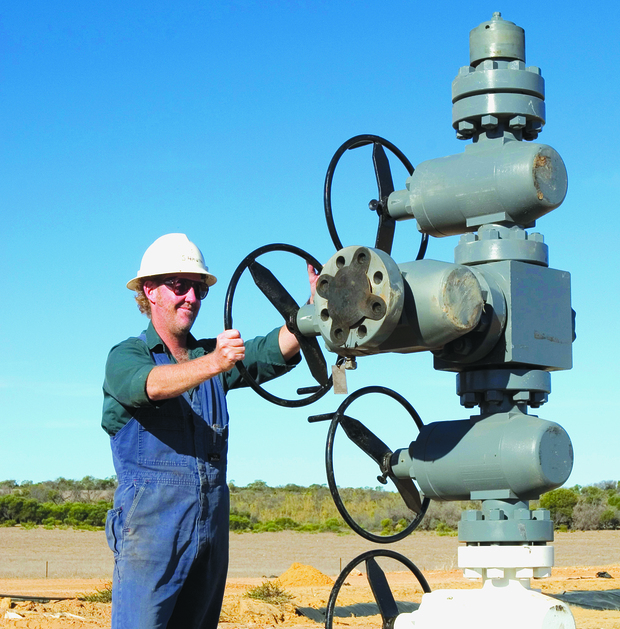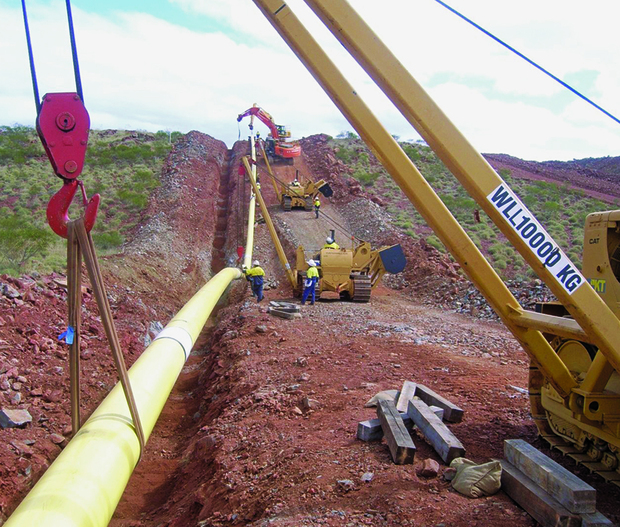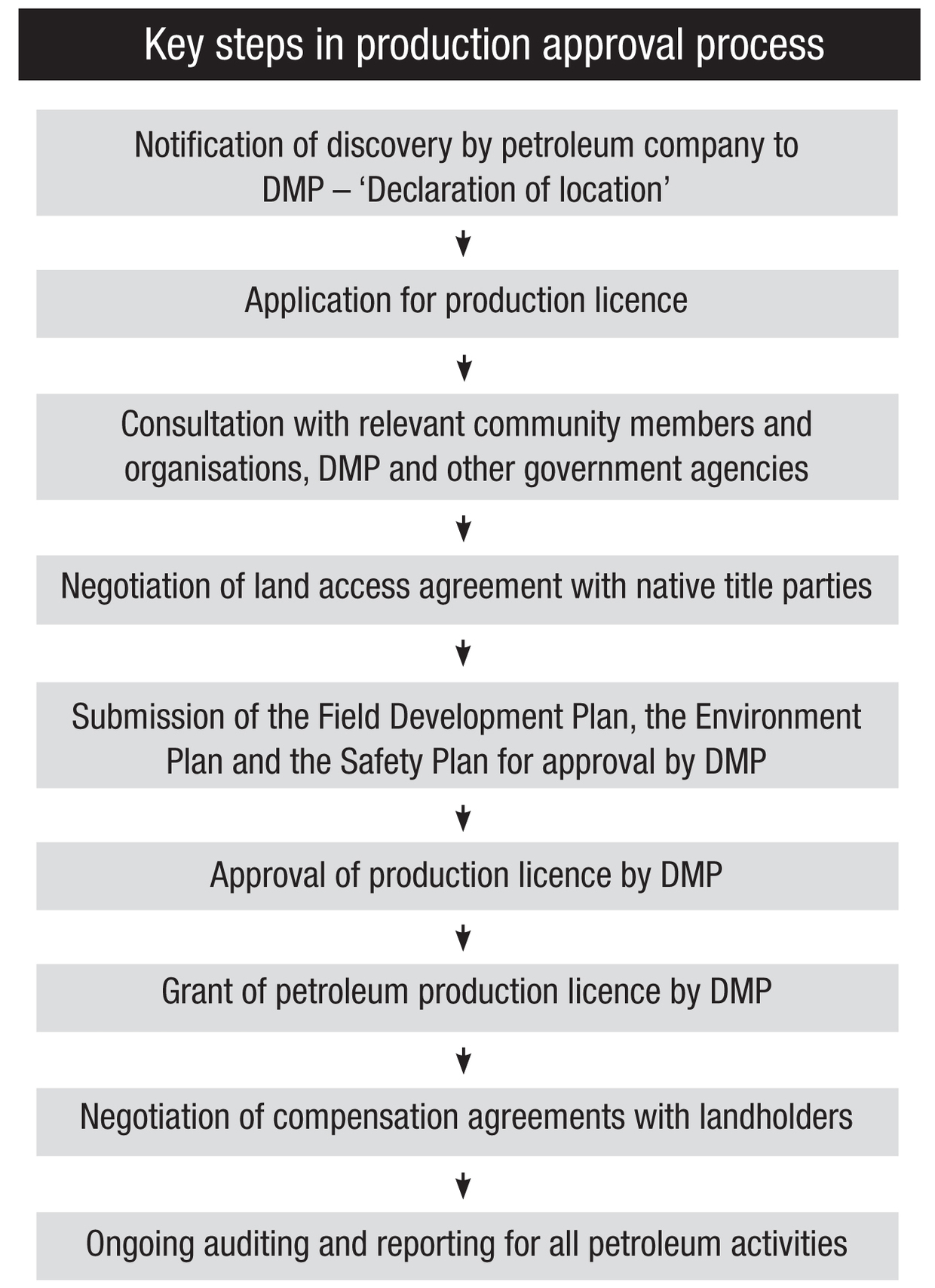Granting a production licence

Any exploration company in Western Australia, which finds oil or gas (petroleum), must let the Department of Mines, Industry Regulation and Safety (DMIRS) know of the discovery. The company has the option of further exploration to get better estimates on how much petroleum is available. If the company finds significant oil or gas they can then apply for a production licence. Before the start of production, the petroleum company must submit the following plans for DMIRS assessment:
- Field Development Plan: This contains scientific information gathered during the exploration phase. It also contains the petroleum companies’ plans to manage and develop the resource. The plan details proposals for sound resource management, safety of all people and protection of the environment.
- Environment Plan: Petroleum activities that might have significant environmental impacts will be referred to the Environmental Protection Authority or other government agencies for assessment.
- Safety Plan: This is project-specific for each stage of the proposed project and is assessed by DMIRS to make sure the activities will be as safe as possible.
Petroleum companies must negotiate land access agreements with native title parties, private landowners or lessees before DMIRS can grant the production licence. Landholders impacted by the production facilities are entitled to compensation from the petroleum company.
Production of oil and gas
Production is the controlled release of petroleum trapped underground. The oil and gas flows through a well to the surface. Sometimes, petroleum trapped in tight rock formations needs help to get into the well, using technologies like hydraulic fracturing.
A number of valves at the top of the well called ‘Christmas trees’ control the flow of petroleum to treatment and storage facilities.
Hydraulic fracturing

Petroleum is trapped in rocks deep underground and sometimes it needs help to get into the well. To bring gas from shale and other source rocks to the surface, hydraulic fracturing (also known as fraccing) is sometimes used. Water, sand and small amounts of chemicals are pumped into the rock to make tiny cracks (fractures). The sand is used to keep the cracks open so that the gas can flow into the well and up to the surface.
The well bore walls are sealed by steel pipes and cement to safely hold the gas, water and sand inside and protect underground water aquifers. The technology has been used safely and successfully in Western Australia for more than 50 years.
Visit Natural gas from shale and tight rocks for more information about shale gas and hydraulic fracture stimulation.
Processing and transporting oil and gas
A petroleum production facility may have several wells that are connected to a treatment plant by pipes buried underground. At the treatment plant the petroleum is separated into different crude products, which are stored in large tanks for loading onto road trucks or piped underground to the main processing centres.
Crude oil and condensate is transported to an oil refinery and is refined to products such as unleaded petrol, opal petrol, diesel, aviation fuel, bitumen and kerosene. Gas is sent to a processing plant where the mixture of gases is separated into gas products such as natural gas, Liquefied Petroleum Gas (LPG), propane, nitrogen and helium.
Natural gas is purified and cooled to very cold temperatures to reduce its volume and becomes Liquefied Natural Gas (LNG). LNG is safely stored and transported in double-walled tanks designed to handle the cold temperature. Once LNG reaches its destination, it is heated and changes back into natural gas for underground piping to households and industry.
The bulk of the oil and LNG is exported around Australia and the rest of the world. In Western Australia, the Dampier to Bunbury Natural Gas Pipeline and the Goldfields Gas Pipeline transports the gas to large urban and industrial centres to generate electricity.
Key facts
- Bringing oil and gas to production can take more than 10 years of consultation, exploration, planning and development.
- The Department of Mines, Industry Regulation and Safety makes sure proposals are carefully assessed and developed to high standards of engineering and safety.
- Operations are monitored to make sure controls and processes are working successfully.
- For every petroleum activity an environment plan and a safety plan must be submitted to DMIRS for assessment and approval.
For more information check out other information sheets in this series by visiting Native Title and Land Access (NTALA) or Telephone (08) 9222 3333

